Premium Only Content
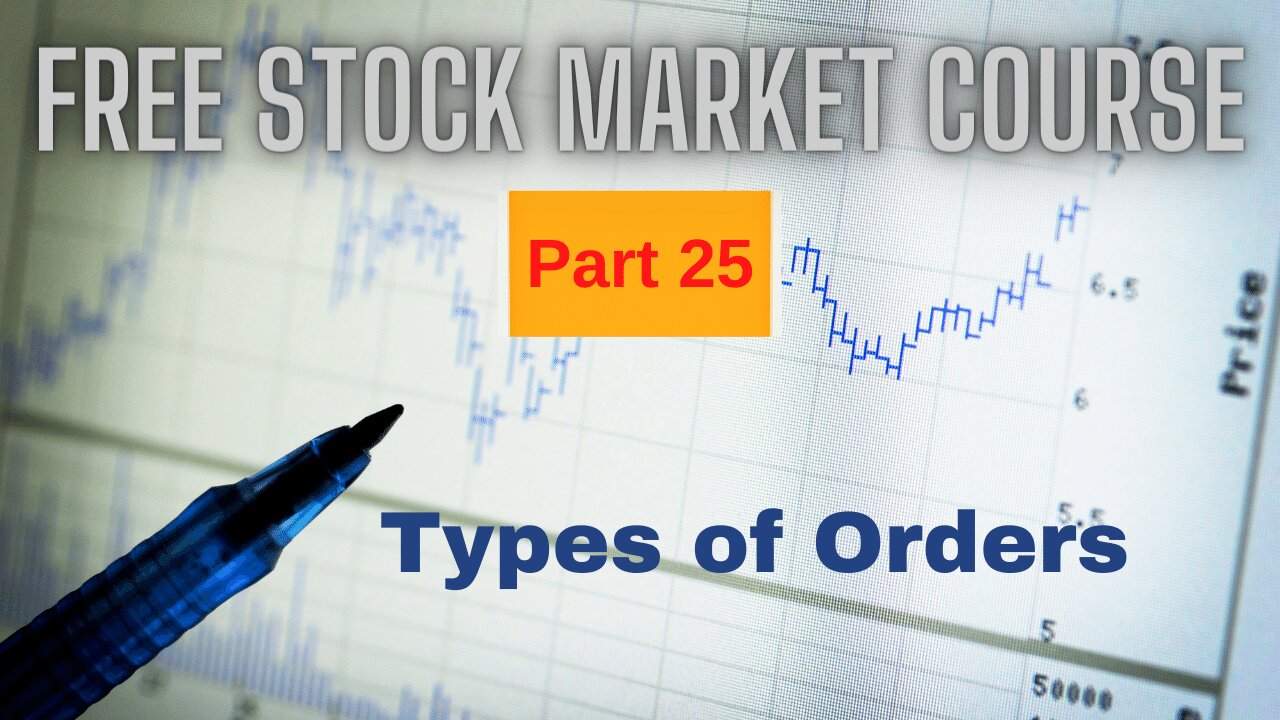
Free Stock Market Course Part 25: Stock Market Orders
Free File downloads
Course notes, Audio files, Assessments, Transcript files, and Course Outline: https://spxinvestingblog.com/downloads/
My Exclusive Free Workshop: The Four P's of Building a Successful Investing Program → https://spxinvesting.mailchimpsites.com
Blog: https://spxinvestingblog.com
Facebook Group: https://www.facebook.com/groups/433843641082343
Bid Ask Prices/Spreads: https://youtu.be/9KvIe73MQEc
Chapters
00:00 Types of Orders
01:12 Market Orders
02:49 Market Order Caution
06:22 Limit Orders
08:56 Stop Orders
10:43 Stop-Loss Orders
13:54 All or None Order
16:12 Good-‘Til-Cancelled Order
17:07 Day Order
17:34 Complex Orders
18:29 Thoughts on Orders
Module 4 Section 4
Types of Orders
Different types of orders can be used:
Entering a new position
Exiting an existing position
Common Orders:
Market Order
Limit Order
Market Orders
Market Order:
An order to buy or sell immediately at the best available price.
A price is not guaranteed a price, but usually it will guarantee the order's immediate execution.
Execution:
Buying: If you are going to buy a stock, then you will pay a price near the posted Ask Price.
Selling: If you are going to sell a stock, you will receive a price near the posted Bid Price.
Market Order Caution
The last-traded price is not necessarily the price at which the market order will be executed.
In fast-moving and volatile markets, the price at which you actually execute (or fill) the trade can deviate from the last-traded price.
The price will remain the same only when the bid and ask prices are precisely at the last-traded price.
Market orders are popular among individual investors who want to buy or sell a stock without delay.
Although the investor doesn't know the exact price at which the stock will be bought or sold, market orders on stocks that trade over tens of thousands of shares per day will likely be executed close to the bid and ask prices.
Limit Orders
A limit order sets the maximum or minimum price at which you are willing to buy or sell.
For example, if you wanted to buy a stock at $10, you could enter a limit order for this amount.
This means that you would not pay a penny over $10 for the particular stock.
It is still possible, however, that you buy it for less than $10.
Most Brokerages charge the same fee for Market and Limit orders.
However, this can vary.
Double check
Stop Orders
Stop Orders can be referred to as:
A Stop Loss Order
Stopped market
On-stop buy
On-stop sell
This can be a beneficial type of order.
This order is different because - unlike the limit and market orders, which are active as soon as they are entered - this order remains dormant until a specific price is passed. At which time it is activated as a market order.
Stop-Loss Orders
Each person will need to determine if using a Stop-Loss order is the right thing to do.
Concept:
A stock is bought at $10.
Initial Stop-Loss is at $8
20% risk
The stock climbs to $11
The existing Stop-Loss is canceled and replaced by a new Stop-Loss at $9.
The stock climbs to $12
The existing Stop-Loss is canceled and replaced by a new Stop-Loss at $10. (Break-even)
The idea is to adjust stop-loss orders until a position is exited. This is usually referred to as a Trailing Stop-Loss.
All or None (AON) Order
An all-or-none (AON) order ensures that you get either the entire quantity of stock you requested or none at all. This is typically problematic when a stock is very illiquid, or a limit is placed on the order.
Execution can be spread out over a period of time (usually minutes)
This can be similar to a Fill-or-Kill (FOK) Order.
The price and size must be executed immediately, or the order is canceled.
Good-‘Til-Canceled (GTC)
This order is typically used with an existing open position.
Good-Till-Canceled (GTC) Orders will remain active until canceled.
Brokerages will typically limit the maximum time you can keep an order open (active) to 90 days maximum.
Day Order
An Order that only lasts for one trading day.
This means that after the end of the trading day, the order will expire.
If it isn't transacted (filled), then it will have to be re-entered the following trading day.
Complex Orders
Numerous additional types of orders can be entered.
More complicated orders are usually involved when implementing more complicated strategies.
These order-types will be covered when they apply to a specific strategy.
Thoughts on Orders
Most often, most investors set Limit and Stop-Loss Orders at round numbers.
Instead of setting a Stop at $10, perhaps it should be set at $10.05 or $9.95.
Make sure you understand if a position is being opened or closed.
Buy-to-Open
Buy-to-Close
Sell-to-Open
Sell-to-Close
Any order is turned-in to a Market Order if the criteria for it to be filled has been met.
-
 7:06
7:06
The SPX Investing Program
2 days agoWhat’s Next for the S&P 500 This Week?
80 -
 21:15
21:15
The SPX Investing Program
3 years ago $0.01 earnedFree Stock Market Course. Part 6: ETFs
328 -
 34:42
34:42
The SPX Investing Program
3 years agoFree Stock Market Course Part 28: Market Analysis
1032 -
 40:06
40:06
The SPX Investing Program
3 years ago $0.01 earnedFree Stock Market Course Part 15: Forex
208 -
 49:22
49:22
The SPX Investing Program
3 years ago $0.02 earnedFree Stock Market Course Part 14: Cryptocurrencies
2223 -
 19:11
19:11
The SPX Investing Program
3 years agoFree Stock Market Course Part 11: Liquidity
189 -
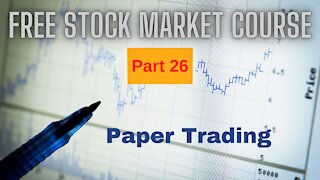 9:56
9:56
The SPX Investing Program
3 years agoFree Stock Market Course Part 26 Paper Trading
105 -
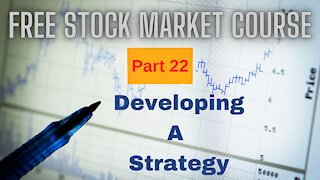 45:53
45:53
The SPX Investing Program
3 years agoFree Stock Market Course Part 22: Developing a Strategy
111 -
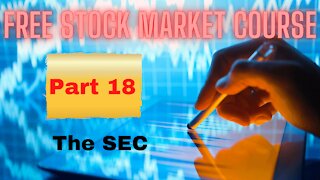 13:16
13:16
The SPX Investing Program
3 years agoFree Stock Market Course Part 18: The SEC
159 -
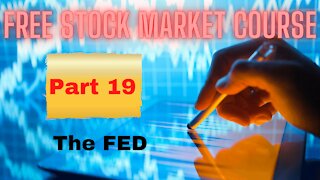 35:37
35:37
The SPX Investing Program
3 years ago $0.03 earnedFree Stock Market Course Part 19: The Fed
371